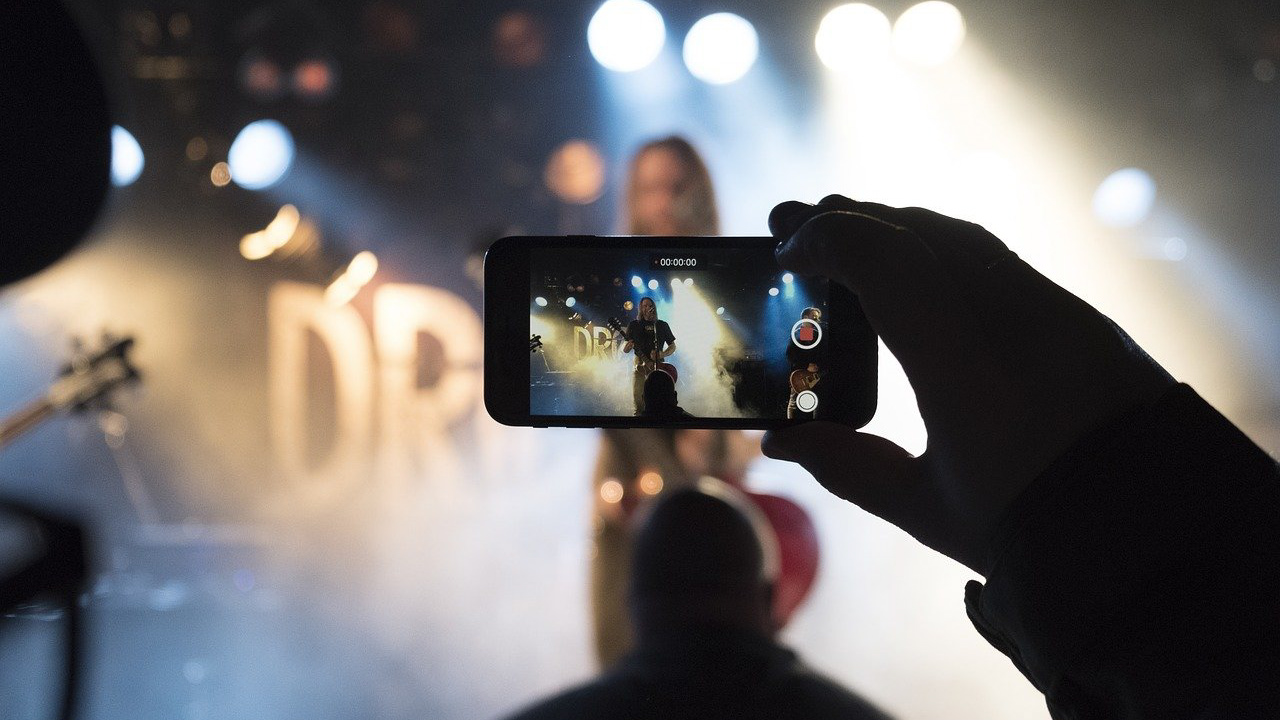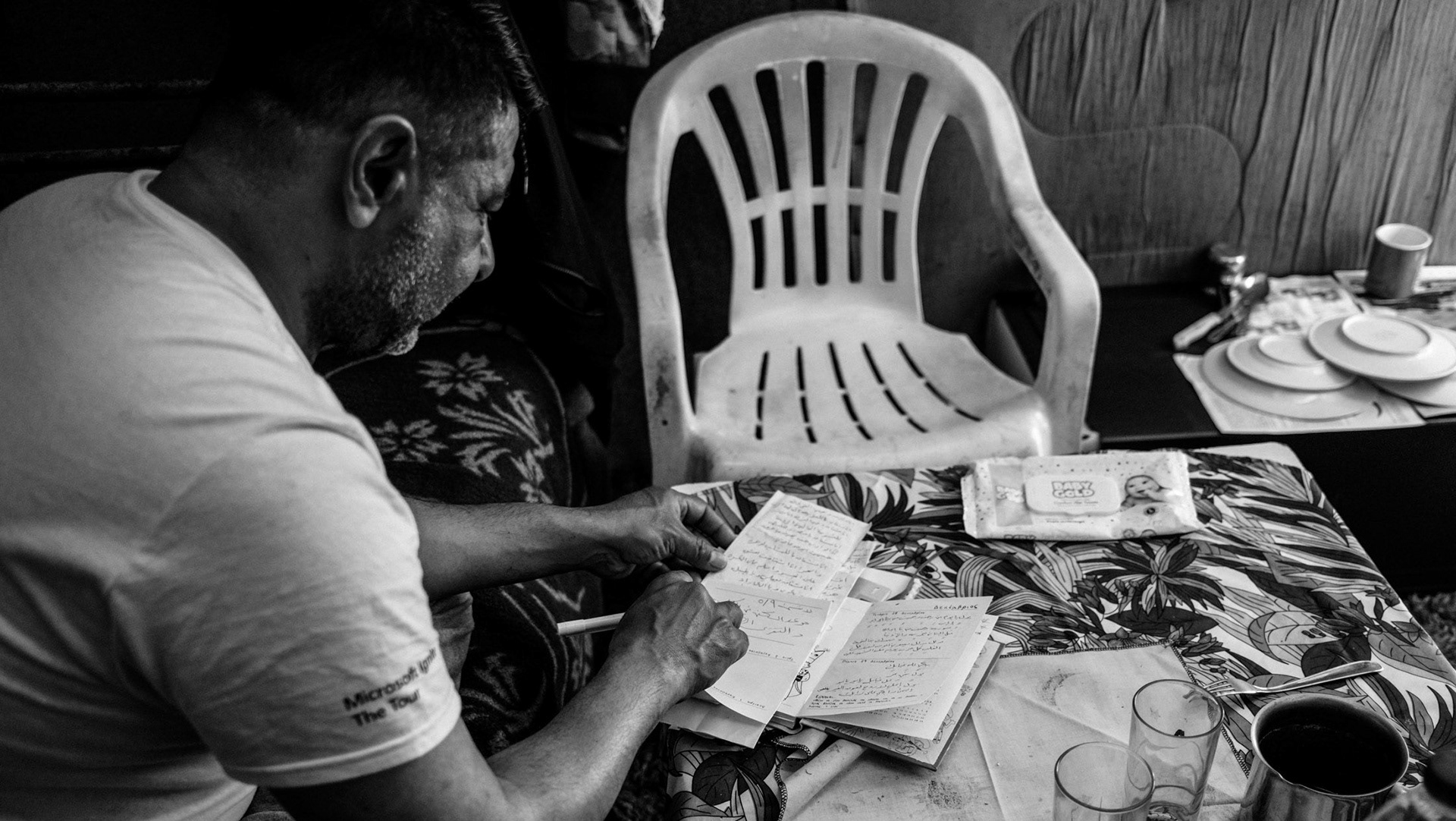THE FUJIFILM X100V: real life review
The FujiFilm X100V is a compact APS-C sensor size camera in production since 2020. It is equipped with a 23mm lens (35mm equivalent in full frame) with an aperture of F/2.0, the FUJINON 23mm f/2 ASPH (with a leaf shutter), which makes the camera a great all-around purpose tool.
The X100V is the latest version of the X100 series.
The X100V is the latest version of the X100 series.
Here some of the main differences from its predecessor, the X100F:
- Redesigned lens: This new lens doesn't the same macro ratio, but this new lens retains more contrast at F/2.
- 26 MP "X-Trans CMOS IV" sensor, up from 24 MP.
- Base ISO 160 rather than the base ISO 200
- Rear LCD is now touch
- Improved leaf shutter capabilities: 2000/s at F/2 from 1000/s of its last predecessor and up to 4000/s form F/4.5 to F/16
- Built in 4 stop ND filter (from 3 stop of the previous models)
- 26 MP "X-Trans CMOS IV" sensor, up from 24 MP.
- Base ISO 160 rather than the base ISO 200
- Rear LCD is now touch
- Improved leaf shutter capabilities: 2000/s at F/2 from 1000/s of its last predecessor and up to 4000/s form F/4.5 to F/16
- Built in 4 stop ND filter (from 3 stop of the previous models)
Like some LEICA cameras, it is a range finder styled but with both an optical and an electronic view finder (OVF and EVF). In addition, the Fuji X100V has the option of having a small electronic little display, on the low right corner, when in optical mode, to assist you in focusing (electronic focus-assist window).
The camera has an all metal body, which makes it sturdy and hit resistant, and has a weather sealed body except for the lens. To keep the lens size as smaller as possible Fujifilm decided not to make it dust and moisture proof, but you can still seal it by purchasing a lens filter (I bought one from NiSi).
The camera has an all metal body, which makes it sturdy and hit resistant, and has a weather sealed body except for the lens. To keep the lens size as smaller as possible Fujifilm decided not to make it dust and moisture proof, but you can still seal it by purchasing a lens filter (I bought one from NiSi).
Fujifilm X100V specs:
- Image sensor: 26.1 millions pixels 23.5mm×15.6mm (APS-C) X-Trans CMOS 4 with primary color filter
- Storage media: 1 SD slot
- RAW: 14bit RAW (RAF original format) / RAW+JPEG
- Lens: FUJINON single focal length lens – 23mm F/2.0 – F/16 (35mm full frame format equivalent)
- ND filter: integrated 4 stops ND filter
- Focus range: Approx. 10cm to infinity / 3.9in. to infinity
- Conversion lens: WIDE / TELE
- ISO Sensitivity: 80 to 51200
- Modes: Exposure mode P (Program AE) / A (Aperture Priority AE) / S (Shutter Speed Priority AE) / M (Manual Exposure)
- Exposure compensation: -5.0EV~+5.0EV 1/3EV step
- Storage media: 1 SD slot
- RAW: 14bit RAW (RAF original format) / RAW+JPEG
- Lens: FUJINON single focal length lens – 23mm F/2.0 – F/16 (35mm full frame format equivalent)
- ND filter: integrated 4 stops ND filter
- Focus range: Approx. 10cm to infinity / 3.9in. to infinity
- Conversion lens: WIDE / TELE
- ISO Sensitivity: 80 to 51200
- Modes: Exposure mode P (Program AE) / A (Aperture Priority AE) / S (Shutter Speed Priority AE) / M (Manual Exposure)
- Exposure compensation: -5.0EV~+5.0EV 1/3EV step
- Shutter type: mechanical leaf shutter + electronic / bulb mode up to 60min.
- Continuous shooting: Approx. 11fps (JPEG: 38 frames, Lossless compression RAW: 17 frames, Uncompressed RAW: 17 frames)
- Hybrid viewfinder: OVF Reverse Galilean viewfinder with electronic bright frame display + EVF 0.5 inch approx. 3.69 millions dots OLED Color Viewfinder (4:3)
- Battery life for still images: Approx. 350 / 420 frames (EVF / OVF Normal Mode)
- Continuous shooting: Approx. 11fps (JPEG: 38 frames, Lossless compression RAW: 17 frames, Uncompressed RAW: 17 frames)
- Hybrid viewfinder: OVF Reverse Galilean viewfinder with electronic bright frame display + EVF 0.5 inch approx. 3.69 millions dots OLED Color Viewfinder (4:3)
- Battery life for still images: Approx. 350 / 420 frames (EVF / OVF Normal Mode)
ERGONOMICS & WEATHER SEALING:
The FujiFilm X100V is a really compact camera (it measures 2.94 × 5.04 × 2.10 inches H,W,D / 74.8 × 128.0 × 53.3 millimeters H,W,D). Its form factor makes the X100V the perfect everyday camera as well as the professional one to be used in environments where a big DSLR is not appropriate.
The small hand-grip on the right side makes it comfortable to be handled, even though someone with big hands will probably find it too small.
I bought it because I was working on a reportage inside the refugee camp in Samos and I couldn’t walk inside the area with the big Canon R and the 24-70mm lens, as I would have attracted the police attention and intimidated the people living there.
Since it is a really compact camera, it was easy to hide under my coat or in the fake-bottom of the UNCHR backpack (backpacks that are provided to all the refugees by the UN).
The FujiFilm X100V is a really compact camera (it measures 2.94 × 5.04 × 2.10 inches H,W,D / 74.8 × 128.0 × 53.3 millimeters H,W,D). Its form factor makes the X100V the perfect everyday camera as well as the professional one to be used in environments where a big DSLR is not appropriate.
The small hand-grip on the right side makes it comfortable to be handled, even though someone with big hands will probably find it too small.
I bought it because I was working on a reportage inside the refugee camp in Samos and I couldn’t walk inside the area with the big Canon R and the 24-70mm lens, as I would have attracted the police attention and intimidated the people living there.
Since it is a really compact camera, it was easy to hide under my coat or in the fake-bottom of the UNCHR backpack (backpacks that are provided to all the refugees by the UN).
In the FujiFilm X100V, I have found the middle ground between size, overall performance, image quality, and reliability.
The 26MP sensor, the 23mm F/2.0 FUJINON lens and a really silent leaf shutter, make it a great tool for reportage and documentary work.
The 26MP sensor, the 23mm F/2.0 FUJINON lens and a really silent leaf shutter, make it a great tool for reportage and documentary work.
As I like to work under extreme weather conditions, I must say that the only drawback of being that small is the weather sealing, which is not as good as my old Canon 5D MK IV or the sturdy Canon 1DX. In fact, it can easily handle light rain or strong wind (dust), but after using it for two hours under heavy rain, some condensation was formed under the front element of the lens (easily fixed by leaving it under non-direct sunlight for a couple of hours).
The refugee camp in Samos (Greece). After two hours of usage, some condensation was formed under the lens' front element of the X100V.
IMAGE QUALITY:
The FUJIFILM X100V is equipped with a 26 MP X-Trans CMOS IV sensor which is APS-C ans is shared with the X-E4, XT-3, X-PRO3, and the XT-30. Some of you may already be familiar with the capabilities of this sensor, which grants 12 of stops dynamic range and usable images even at high ISO (up to 10.000 if properly edited).
I always shoot in AP mode with the exposure compensation set at -1/-0.6 pending on the light, and I have been always able to quickly recover the shadow by lifting them up of about 1/1.5 stop. The image starts quality to fall apart past 4000 ISO, the point where noise in the recovered shadows starts to be noticeable.
From my personal perspective, I don’t mind high noise, as content to me is more relevant than image quality (a meaningless photo with high image quality remains a meaningless photo).
At 6400 ISO, I could still recover some details from the shadow, but, as expected, not as much as when shooting at lower ISO. Some of you may not agree, but I found to get more usable images at high ISO with the FUJIFILM X100V than with my Canon EOS R, since the noise is much more enjoyable on the little APS-C sensor than on the Canon’s 30MP (which in many cases rendered in awful colored banding toward the edges of the frame).
I always shoot in AP mode with the exposure compensation set at -1/-0.6 pending on the light, and I have been always able to quickly recover the shadow by lifting them up of about 1/1.5 stop. The image starts quality to fall apart past 4000 ISO, the point where noise in the recovered shadows starts to be noticeable.
From my personal perspective, I don’t mind high noise, as content to me is more relevant than image quality (a meaningless photo with high image quality remains a meaningless photo).
At 6400 ISO, I could still recover some details from the shadow, but, as expected, not as much as when shooting at lower ISO. Some of you may not agree, but I found to get more usable images at high ISO with the FUJIFILM X100V than with my Canon EOS R, since the noise is much more enjoyable on the little APS-C sensor than on the Canon’s 30MP (which in many cases rendered in awful colored banding toward the edges of the frame).
Being a person that shoots a lot in low light condition, I was greatly satisfied by the performance of the X100V sensor.
This review is based on my usage, so I cannot say I was neither disappointed nor satisfied as I only shot in RAW and I always processed the image in Lightroom.
The images below are all in low res (1500px & 150 PPI), and they are only meant to show some shadow recovery capabilities of the FUJIFILM X100V
The images below are all in low res (1500px & 150 PPI), and they are only meant to show some shadow recovery capabilities of the FUJIFILM X100V
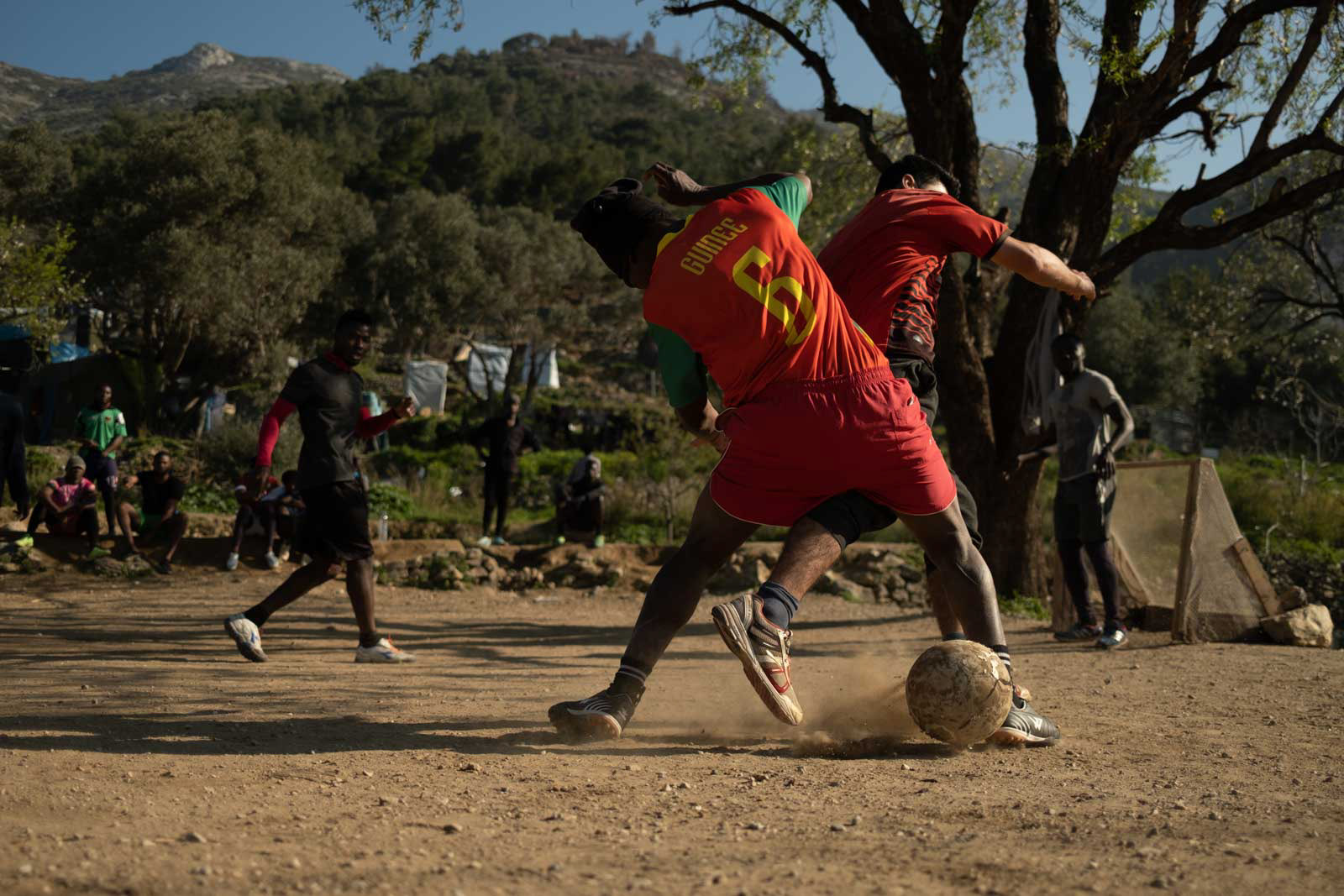
Straight out of camera - ISO 160 - Exp.Comp. -1
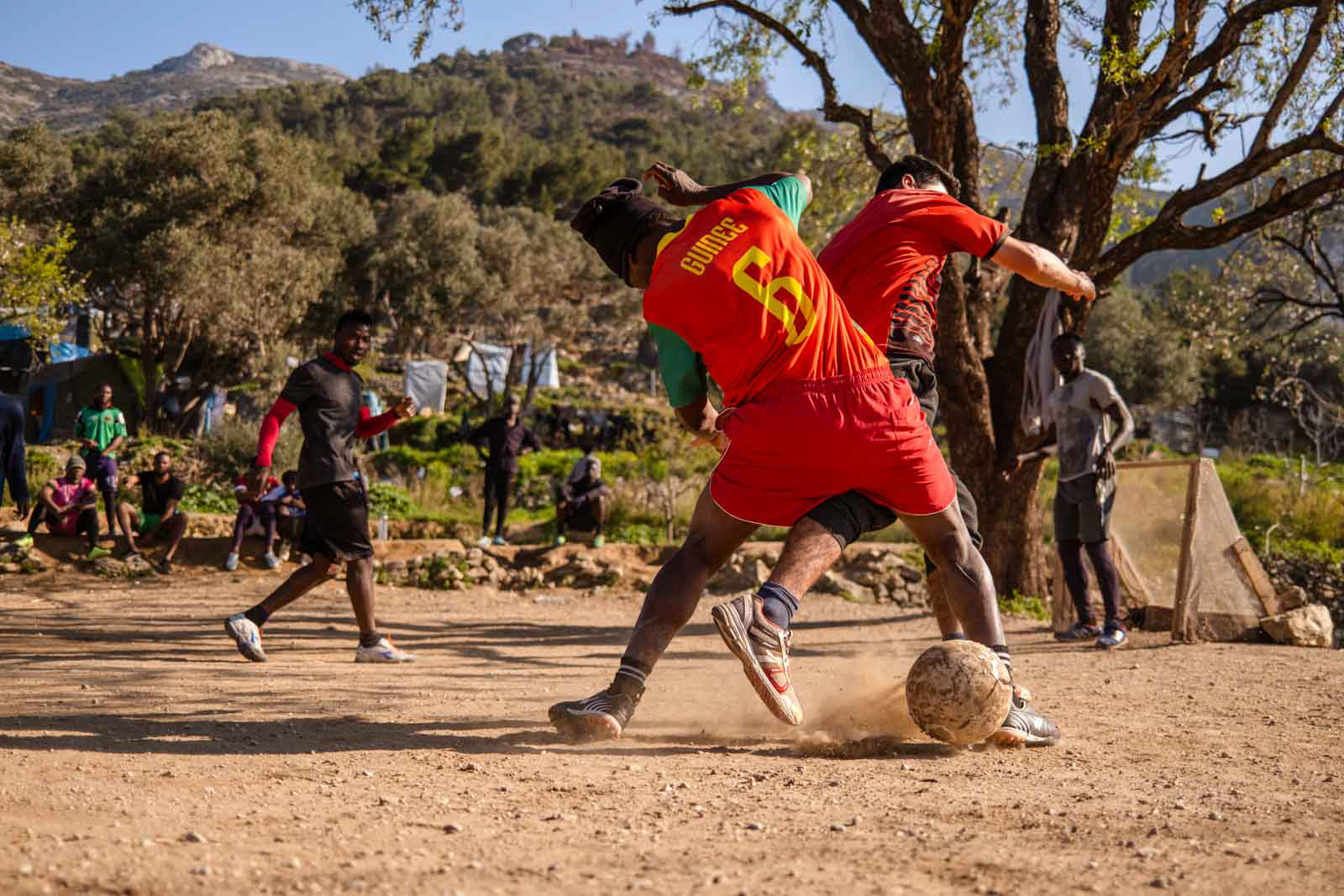
Edited in Lightroom - Shadow recovery +68 | Expo: +0.48
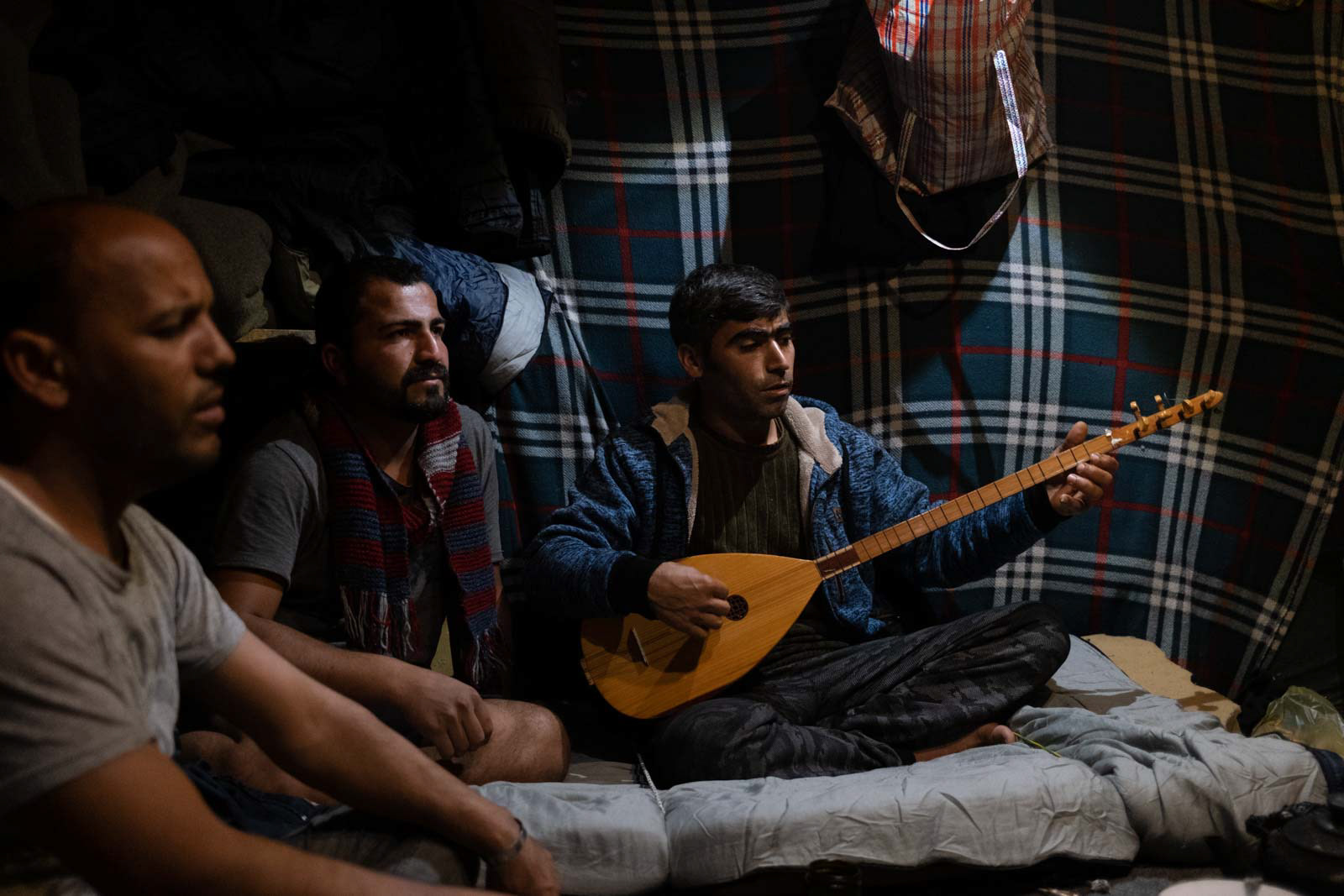
Straight out of camera - ISO 3200 - Exp.Comp. -1
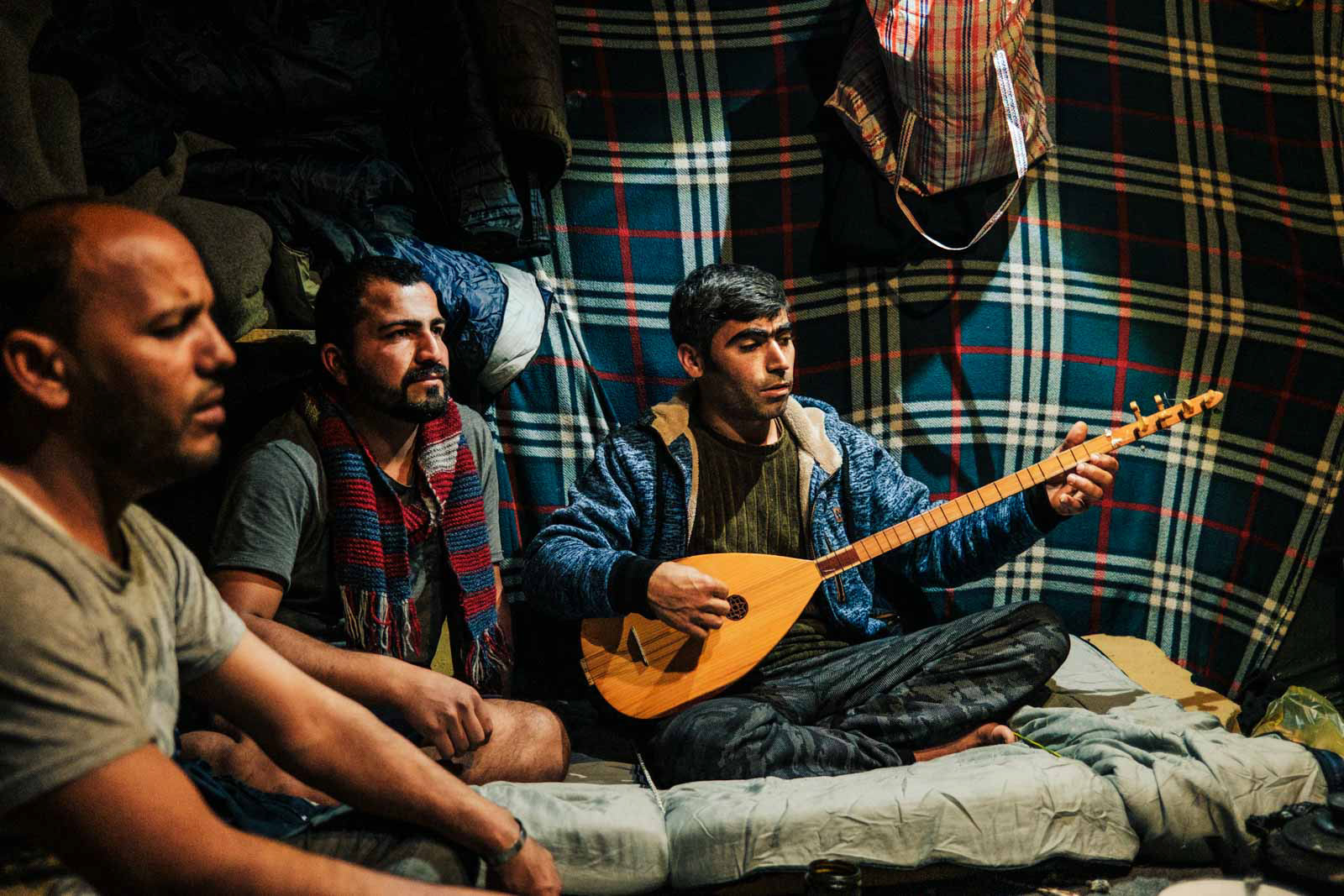
Edited in Lightroom - Shadow recovery +60 | Expo: +0.48
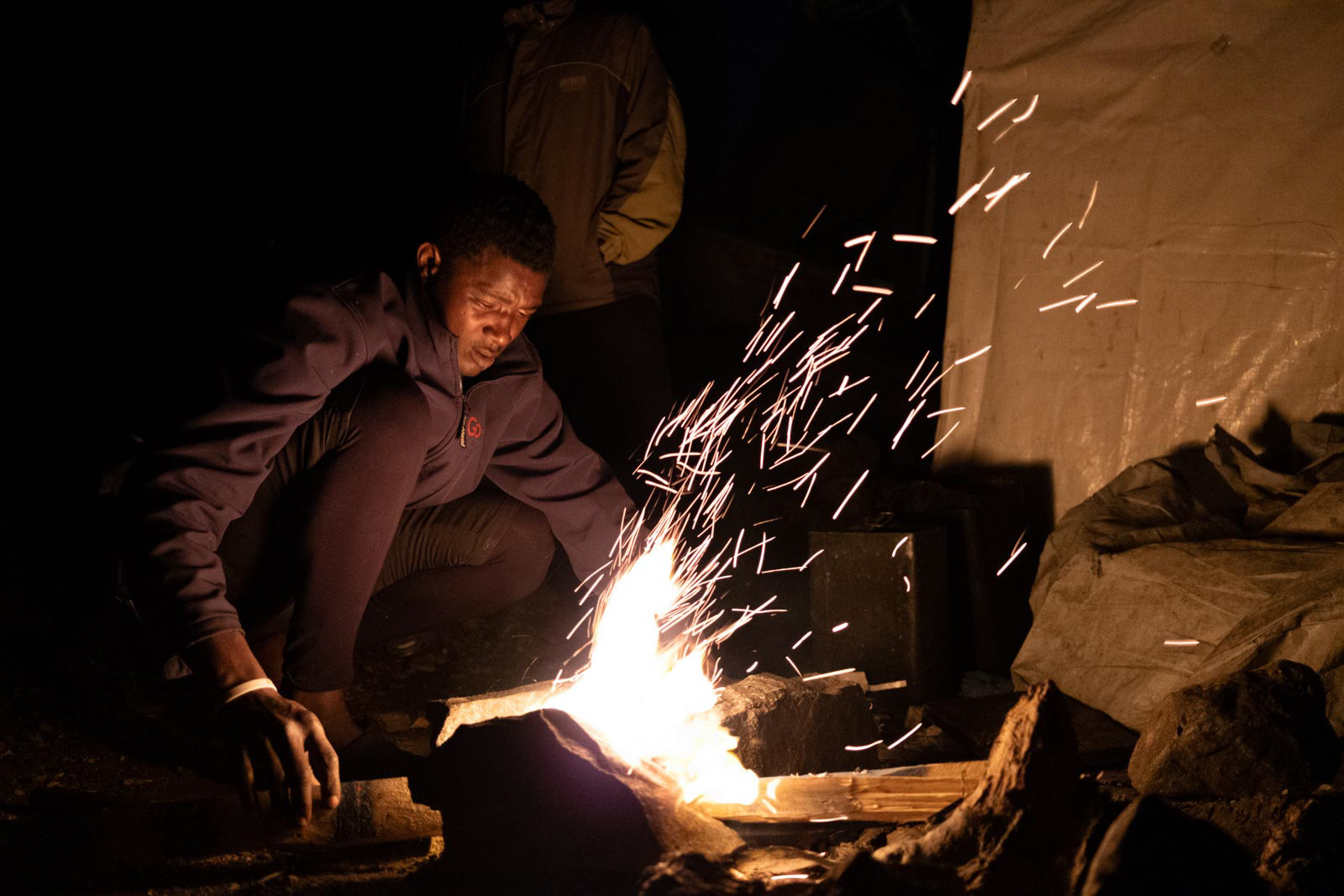
Straight out of camera - ISO 5000 - Exp.Comp. -1
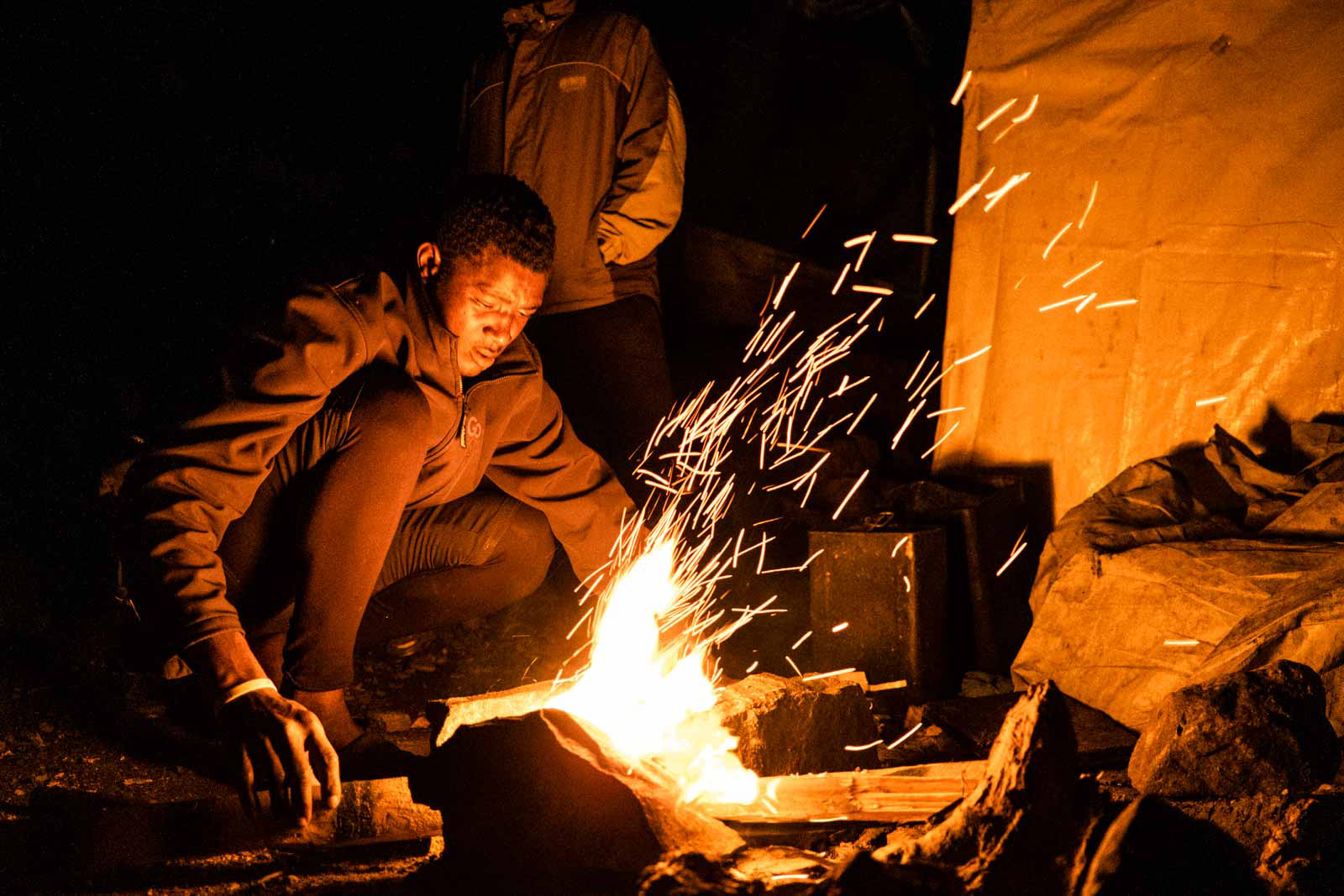
Edited in Lightroom - Shadow recovery +41 | Expo: +0.05
AUTOFOCUS:
As for the autofocus performance, it is great in normal light condition, but limping when shooting in low light or in fast moving scene (sport). The face/eye tracking performs pretty well in normal light conditions. The autofocus works decently under full moon light or even when the photographed subject is close to a dim light source such as a candle.
When I found myself in really low light situations, where the camera couldn't focus on the subject, I just took a few steps back and focused on the clearer and more visible edge closer to my subject (a wau to make up for the limits of its contrast detection focusing system).
Since the 23mm is a wide angle lens, it's easy to have the whole scene in focus even when shooting wide open.
When I found myself in really low light situations, where the camera couldn't focus on the subject, I just took a few steps back and focused on the clearer and more visible edge closer to my subject (a wau to make up for the limits of its contrast detection focusing system).
Since the 23mm is a wide angle lens, it's easy to have the whole scene in focus even when shooting wide open.
CONCLUSIONS:
Is the FUJI X100V the right camera for you? It depends on what you want from a camera. Before doing reportage, I shot commercial and portraits and I would definitely not recommend it for either, as it is a fixed focal length camera. Said that, it is a great camera for everything else, from wedding to street, from landscape to documentary, probably not the greatest choice for sport photography but I should remind you that some incredible sport photographers have been shooting with large format cameras, the slowest option available after pinholes.
The X100V is capable of delivering great performances and high image quality, it only failed me when exposed to intense heavy rain. Unless you are planning to use it on the rain forest, to create the new advertising campaign for Gucci, or to shoot the cover for Vogue Magazine, I absolutely recommend it.
Other than that, the FUJI X100V is as good as, almost, any other camera on the market.
Other than that, the FUJI X100V is as good as, almost, any other camera on the market.
